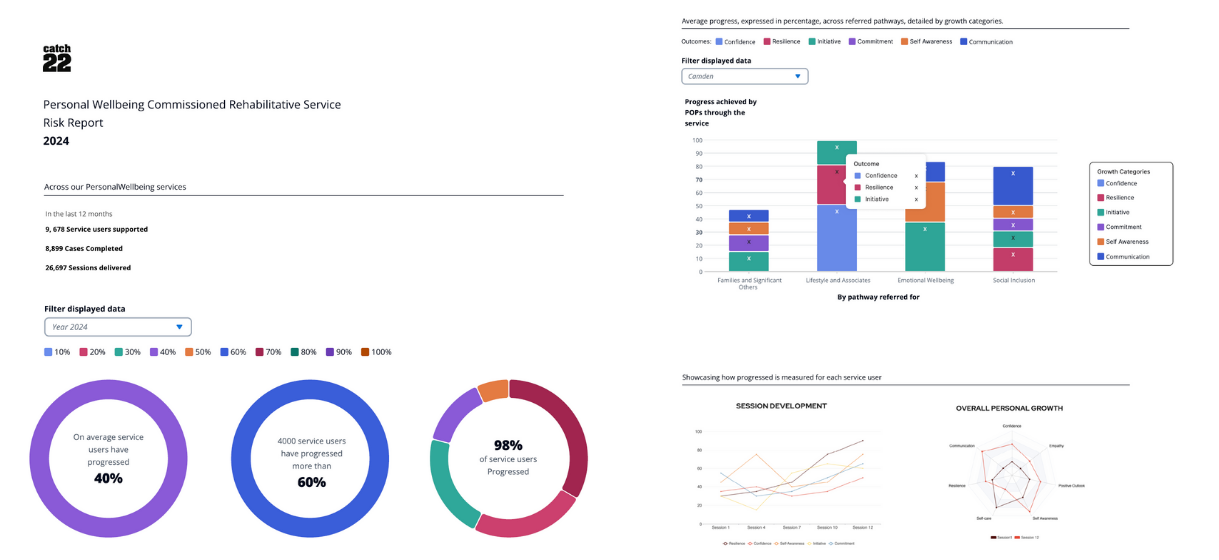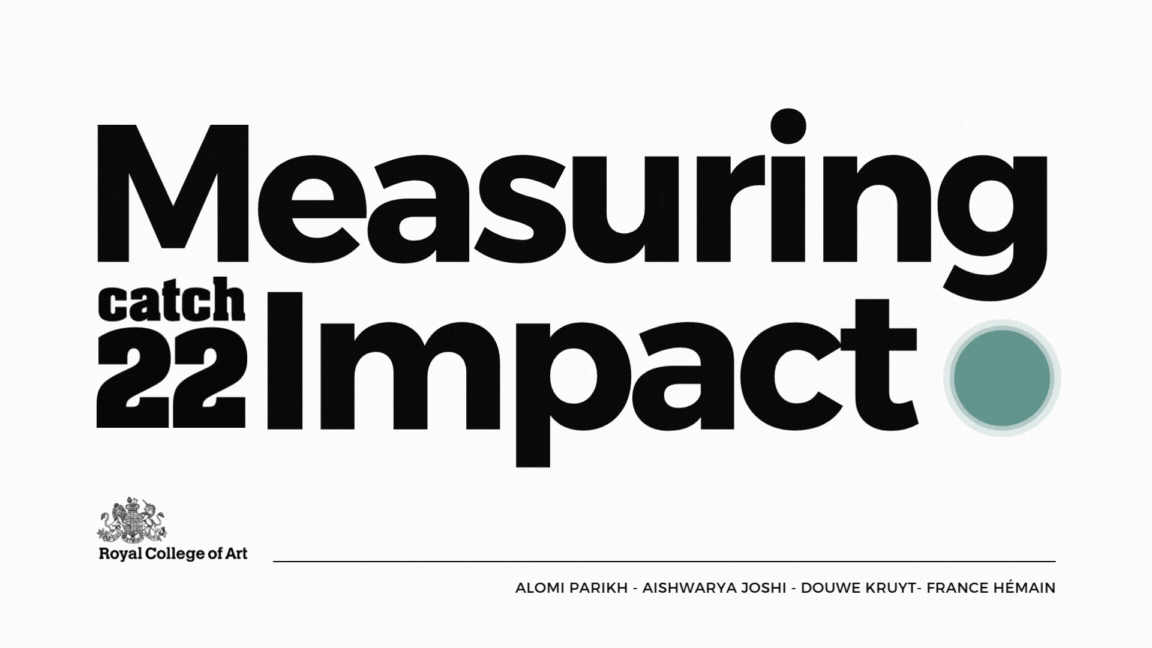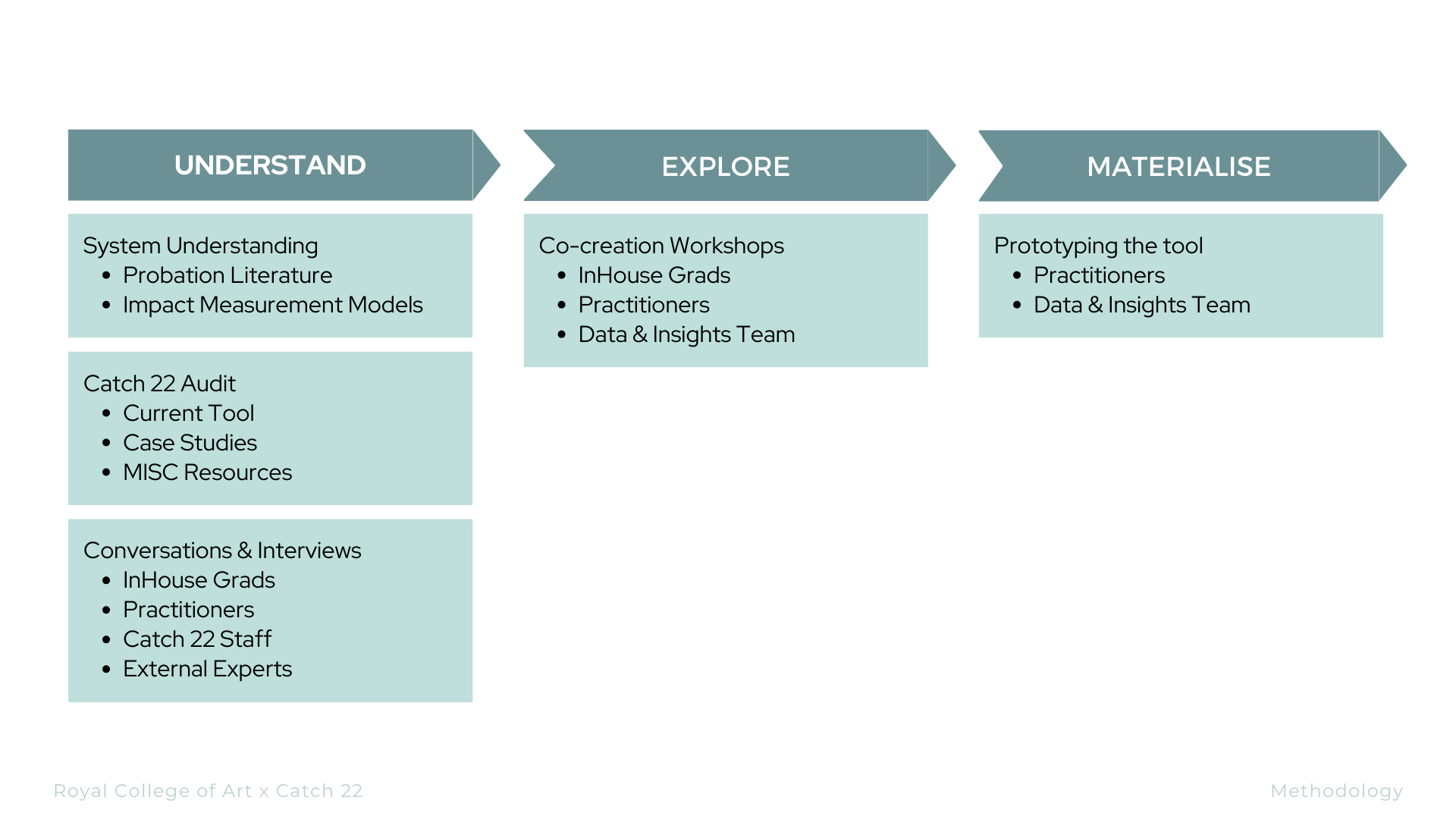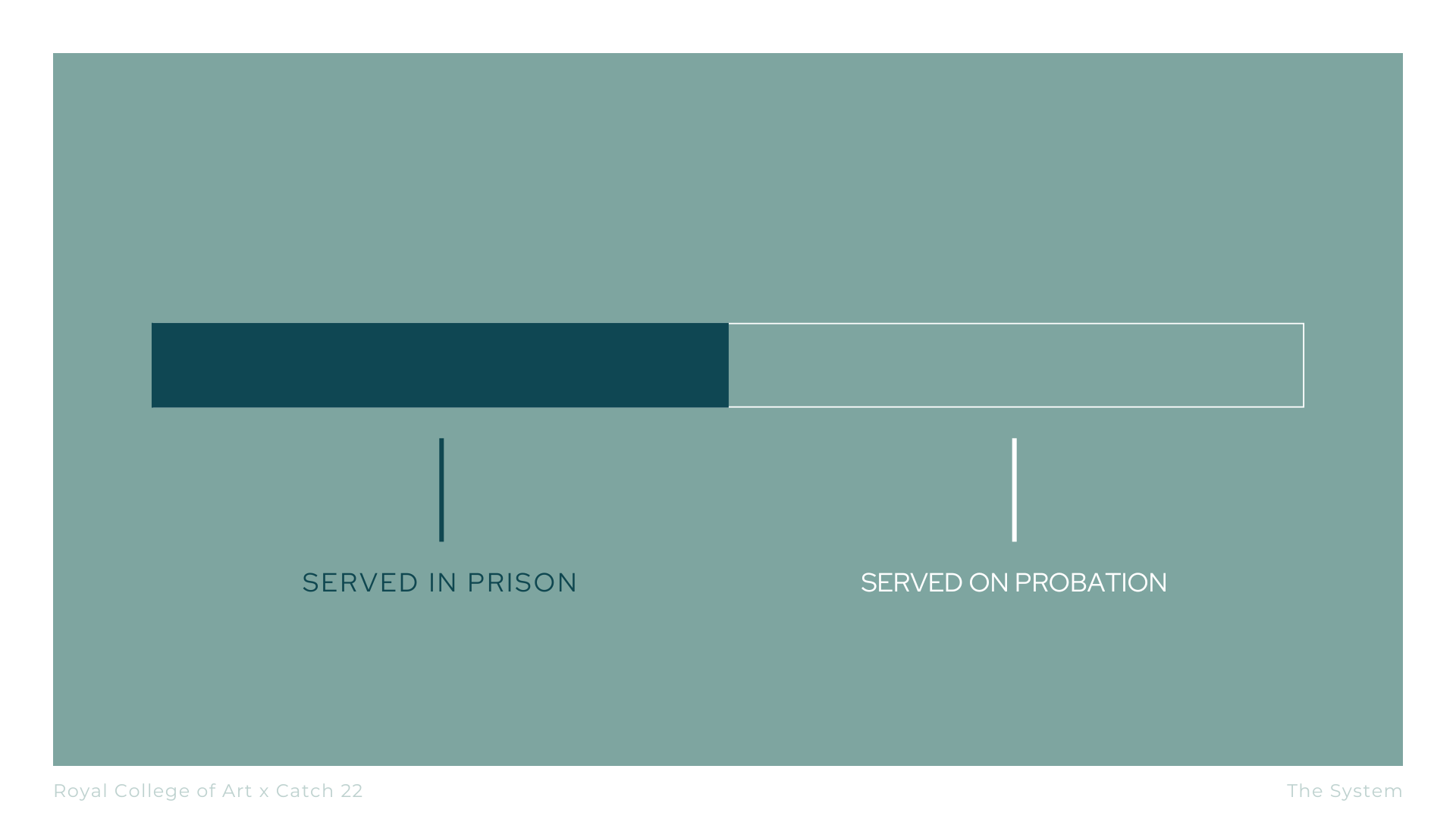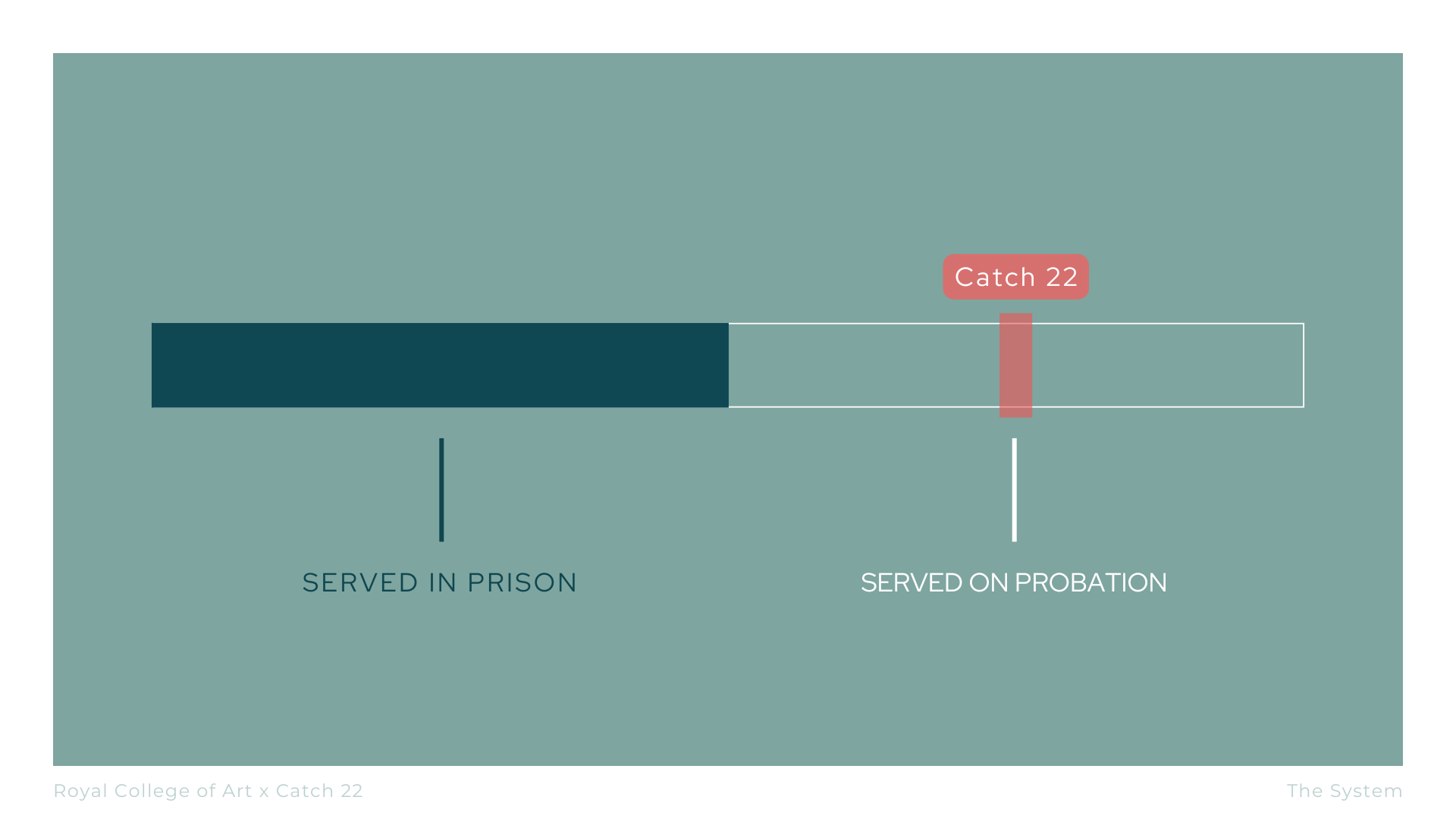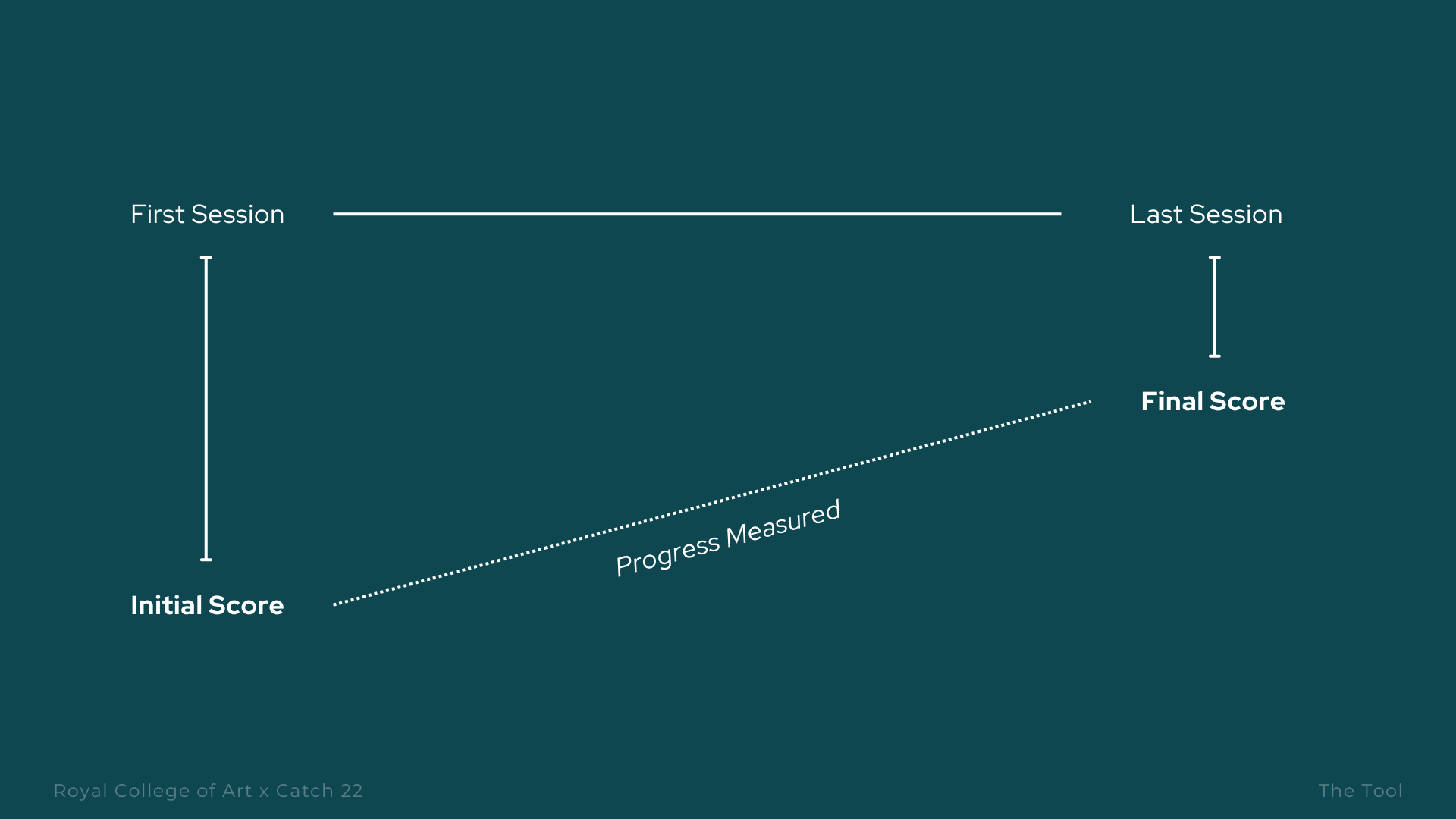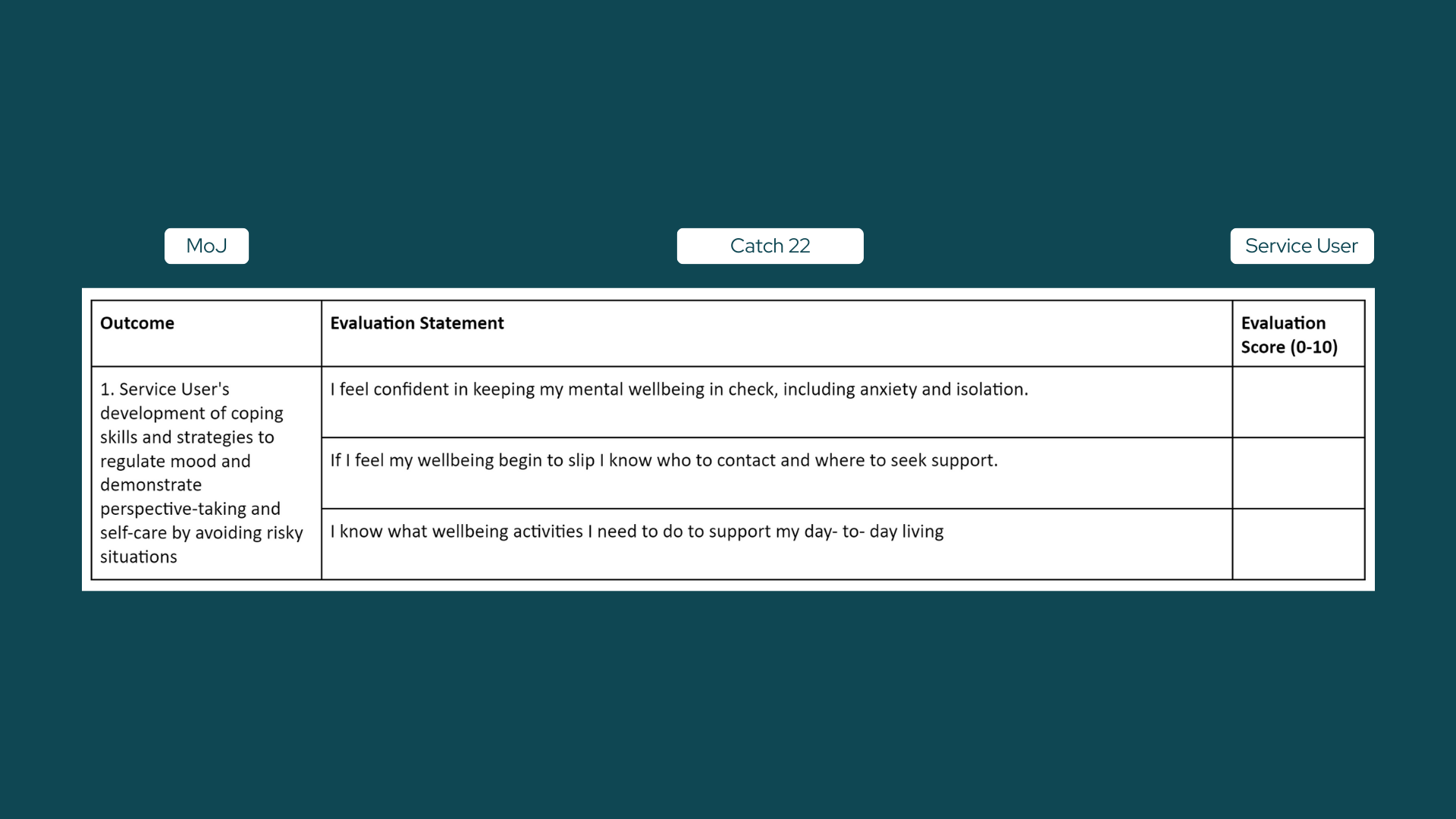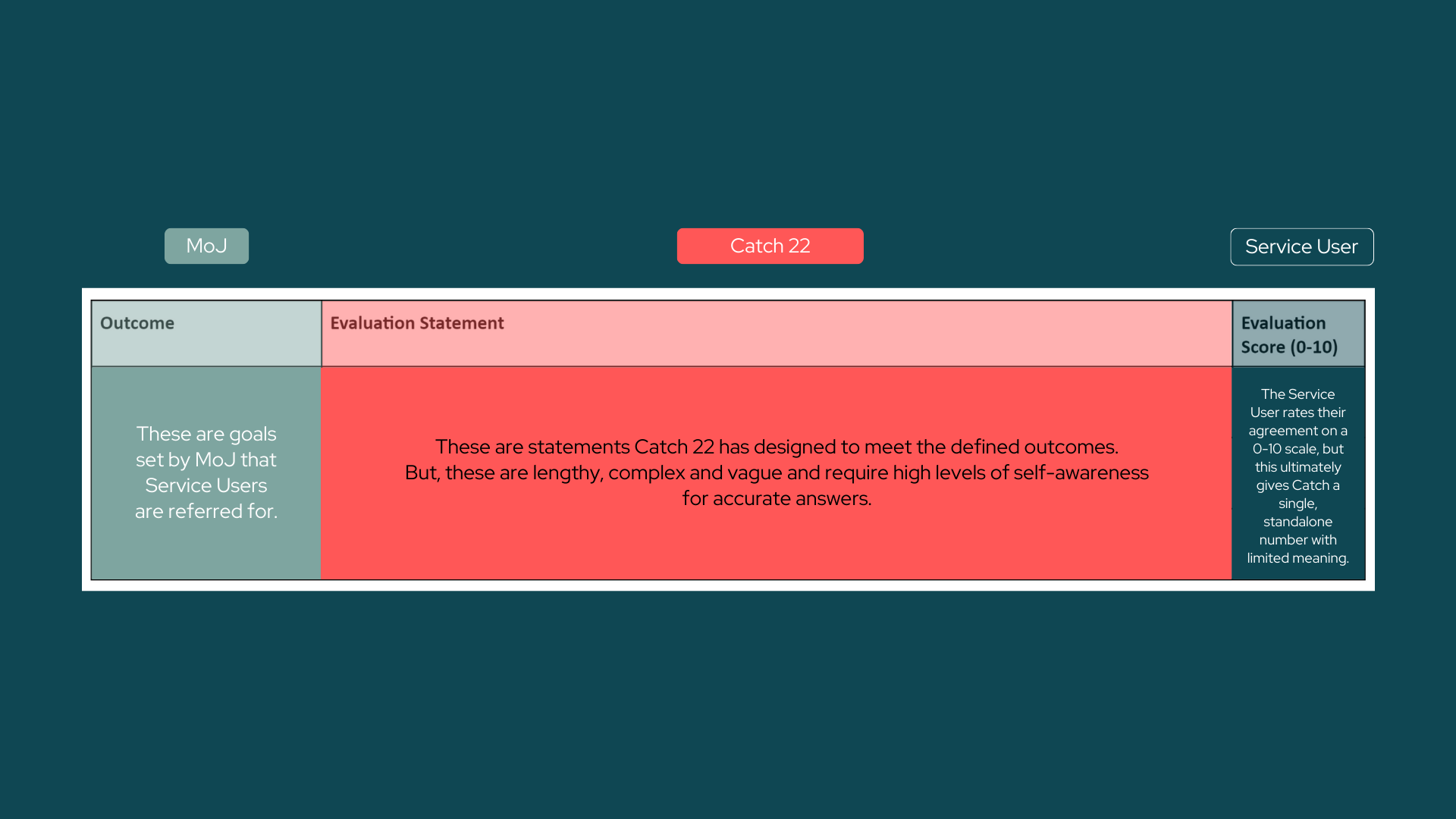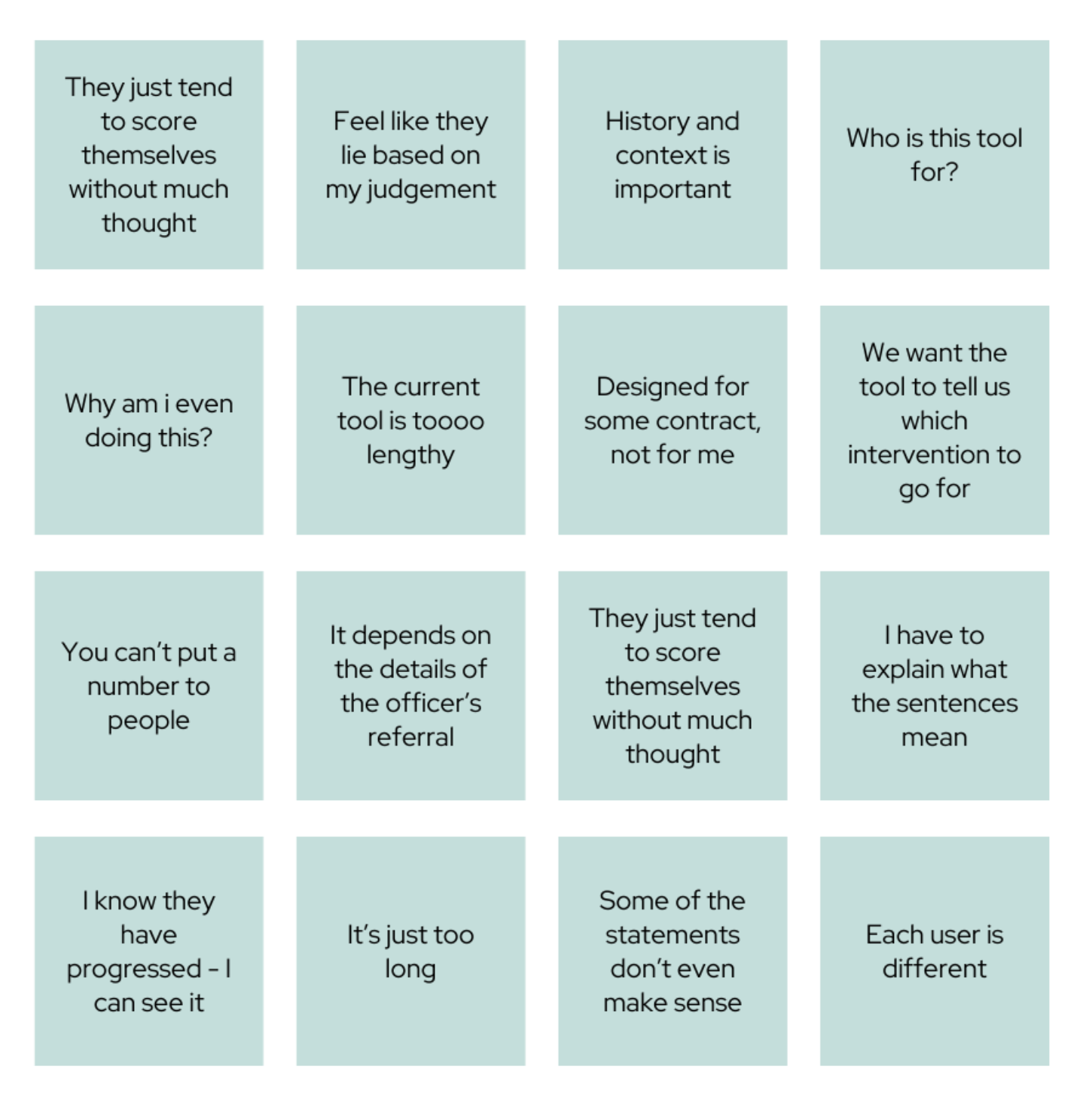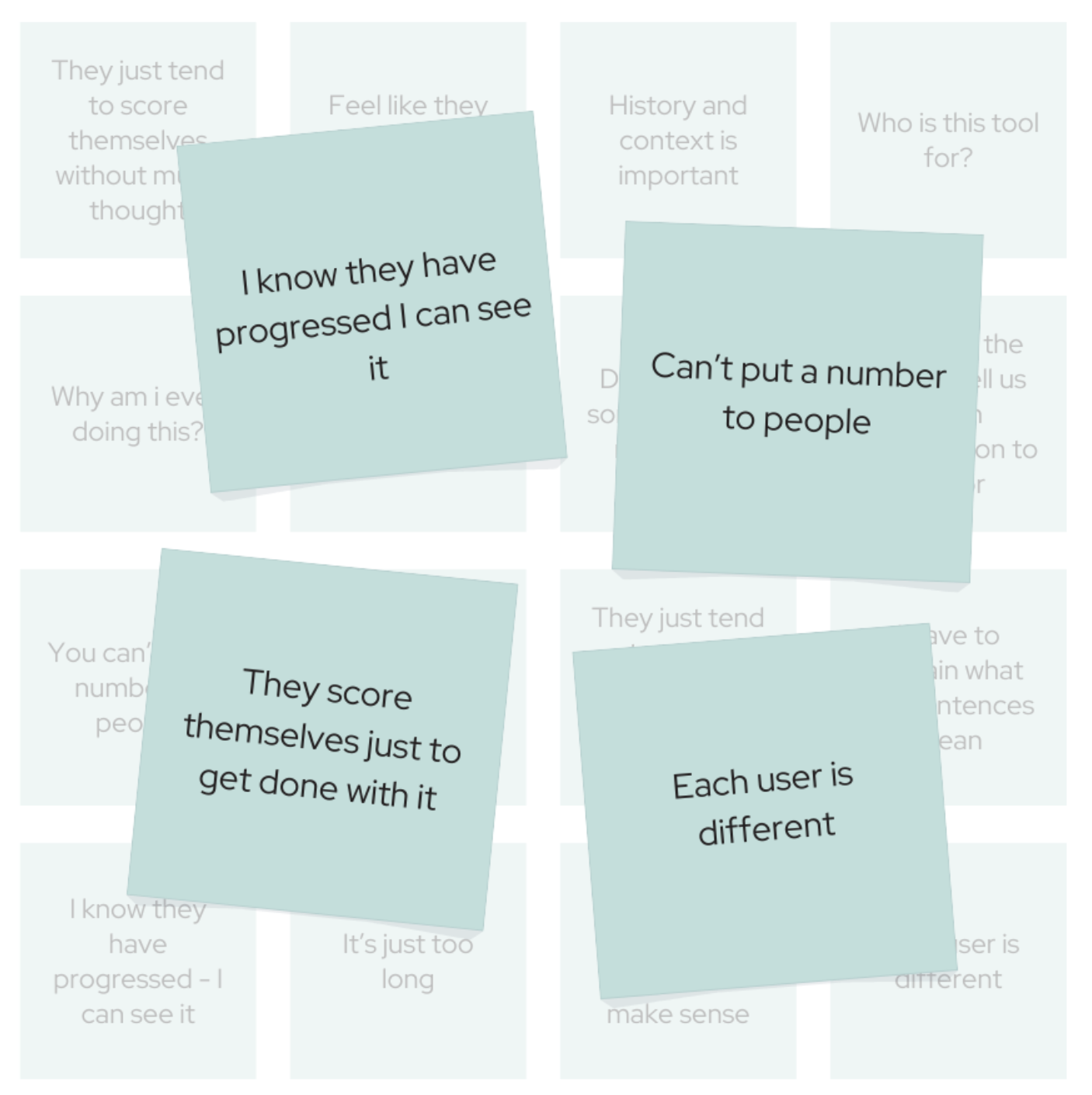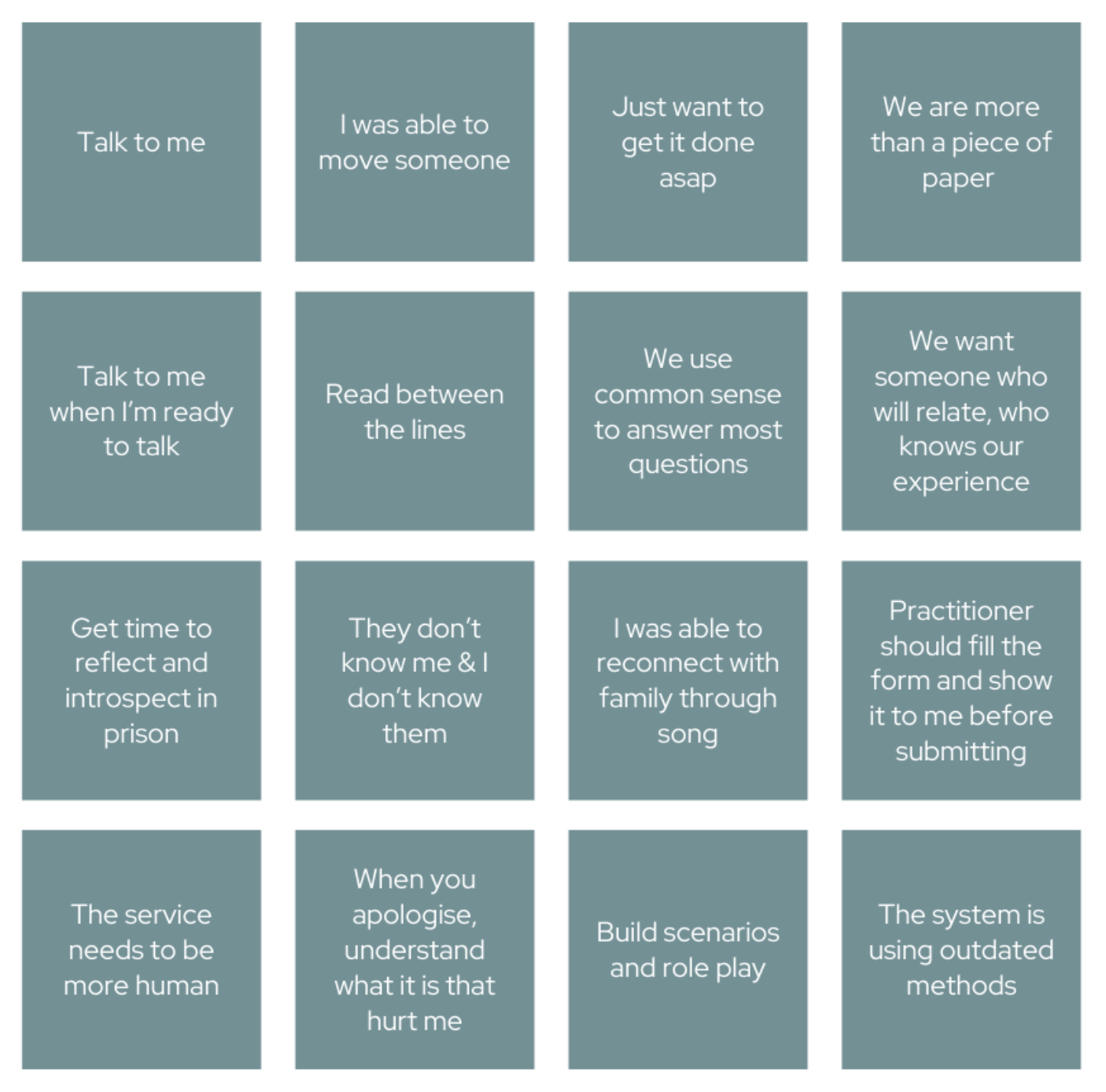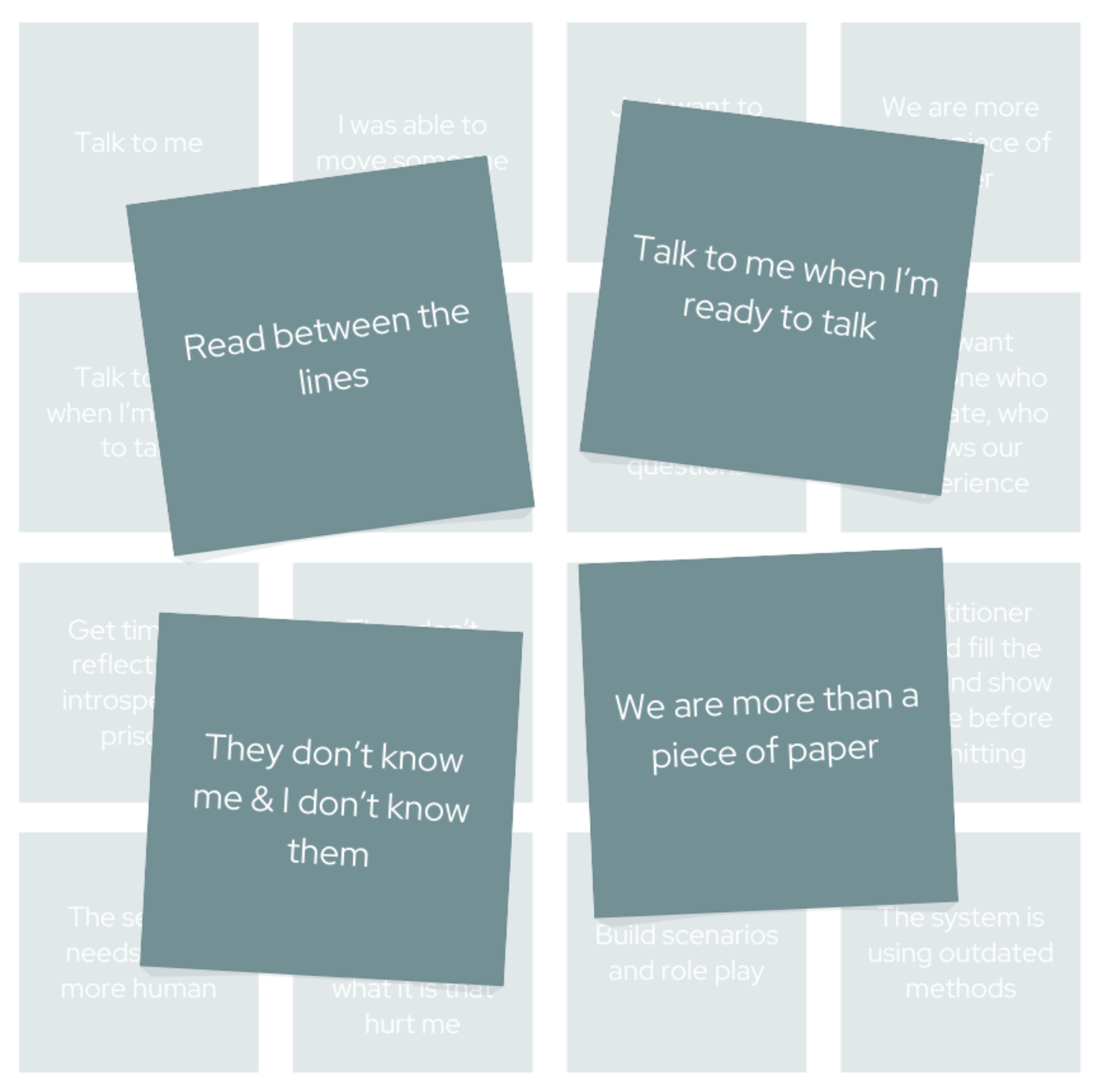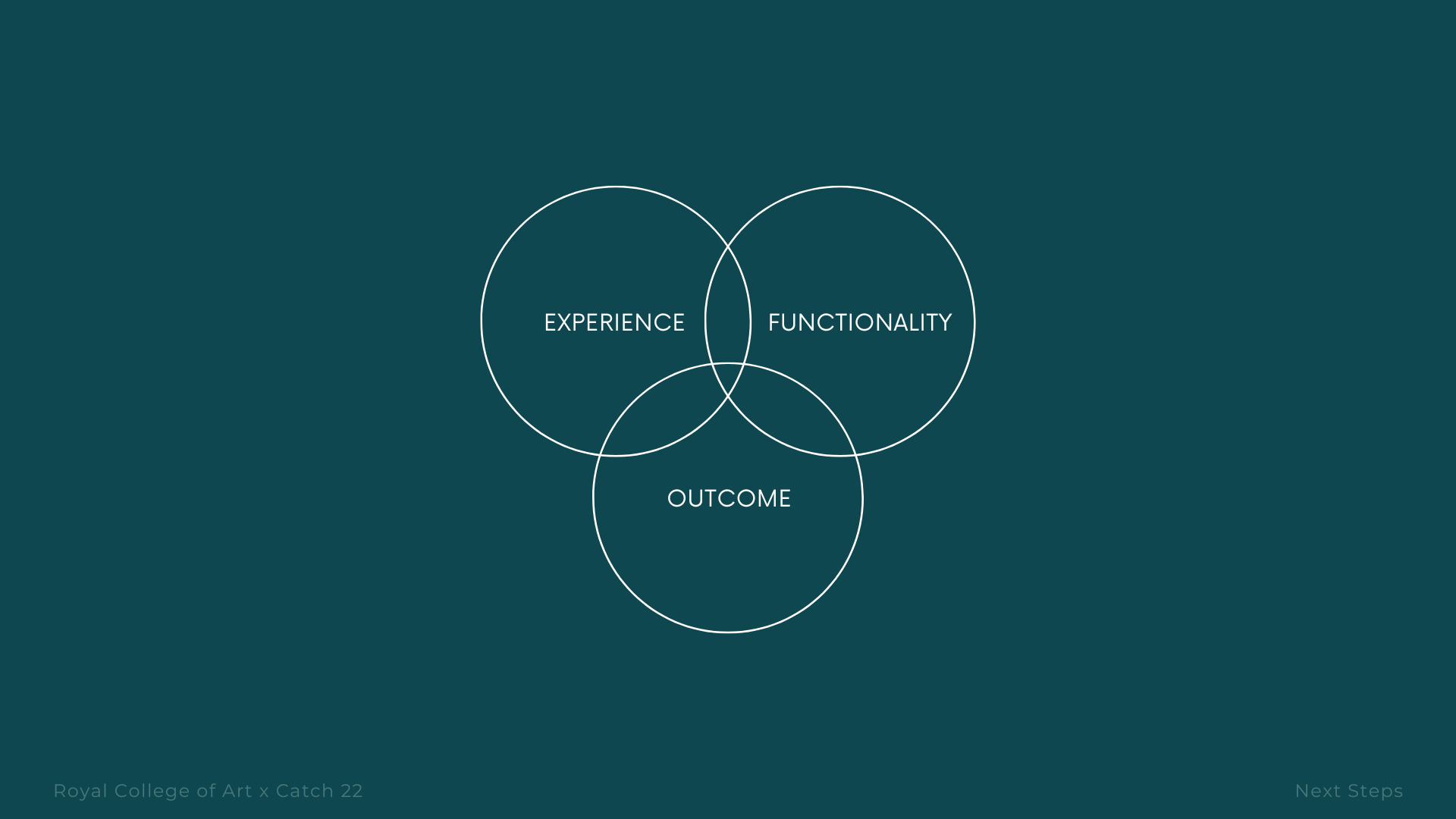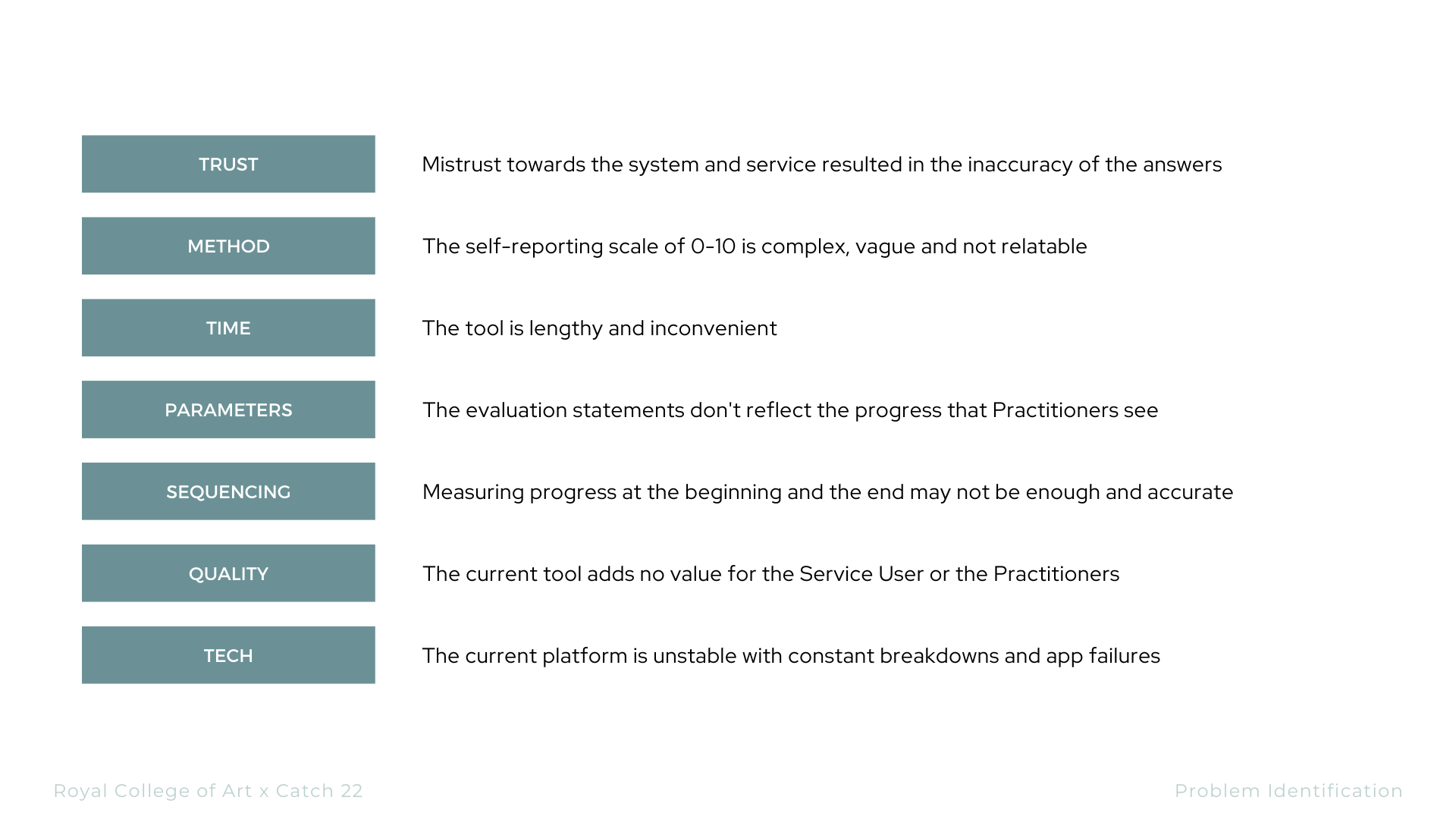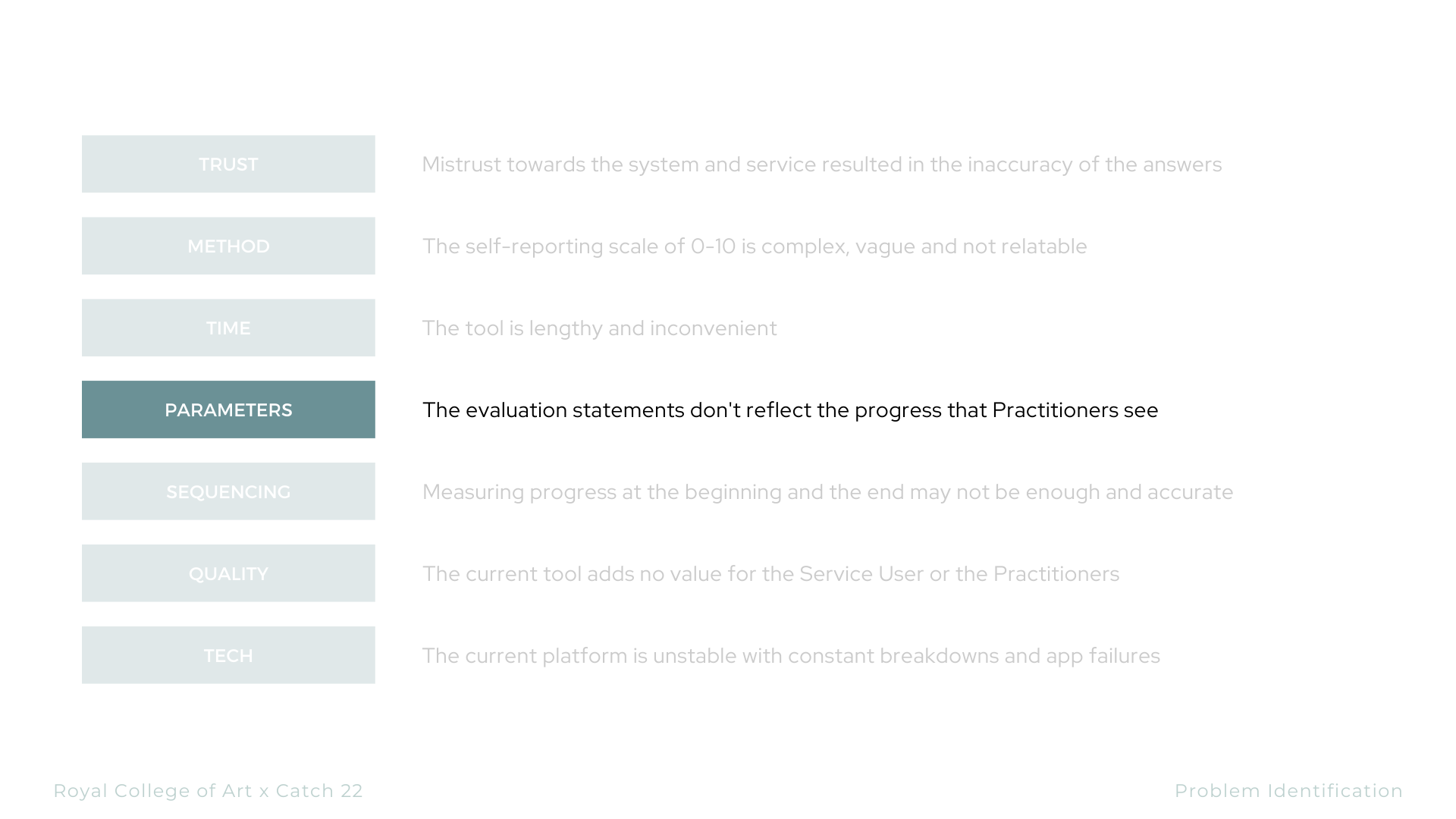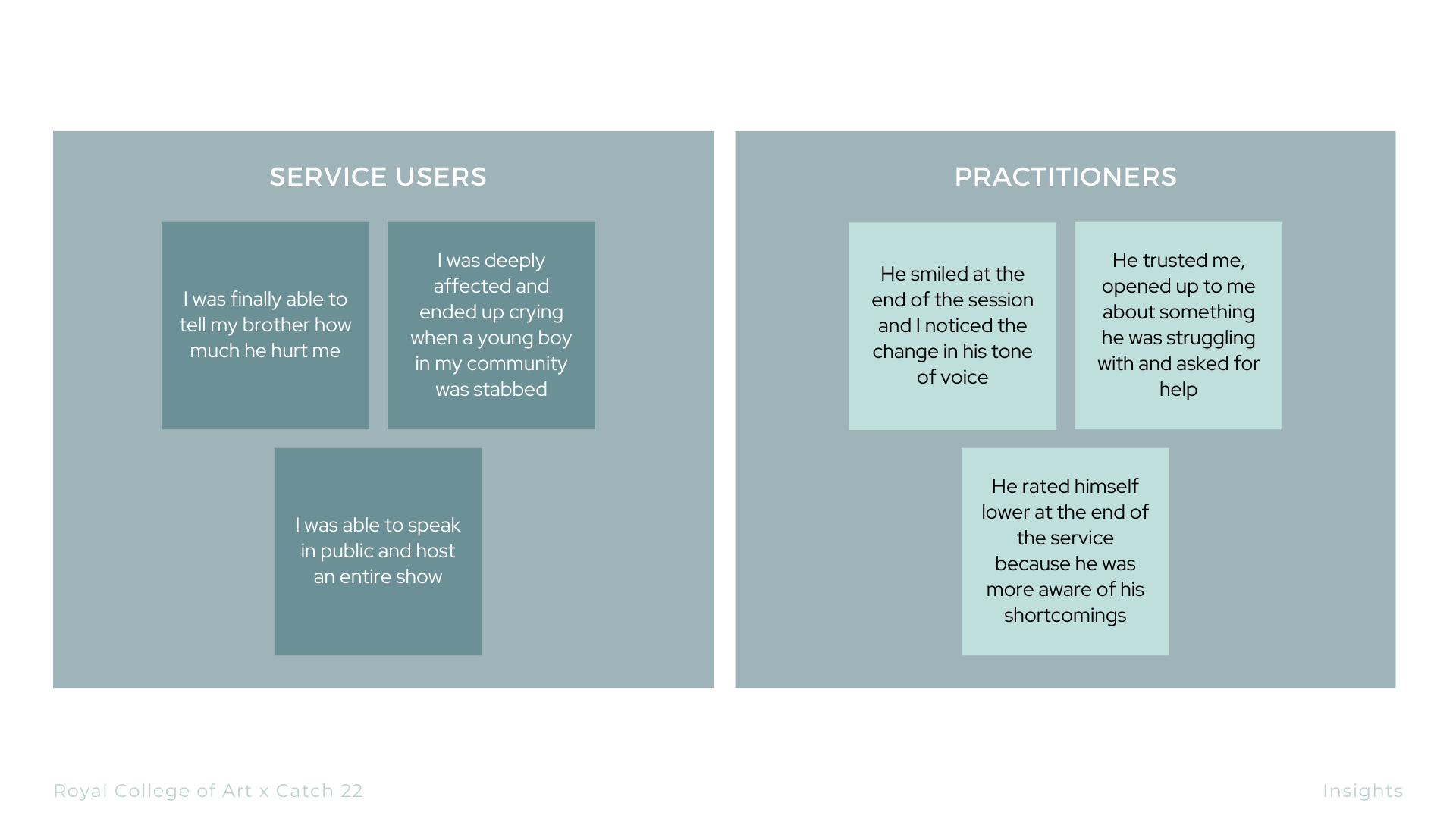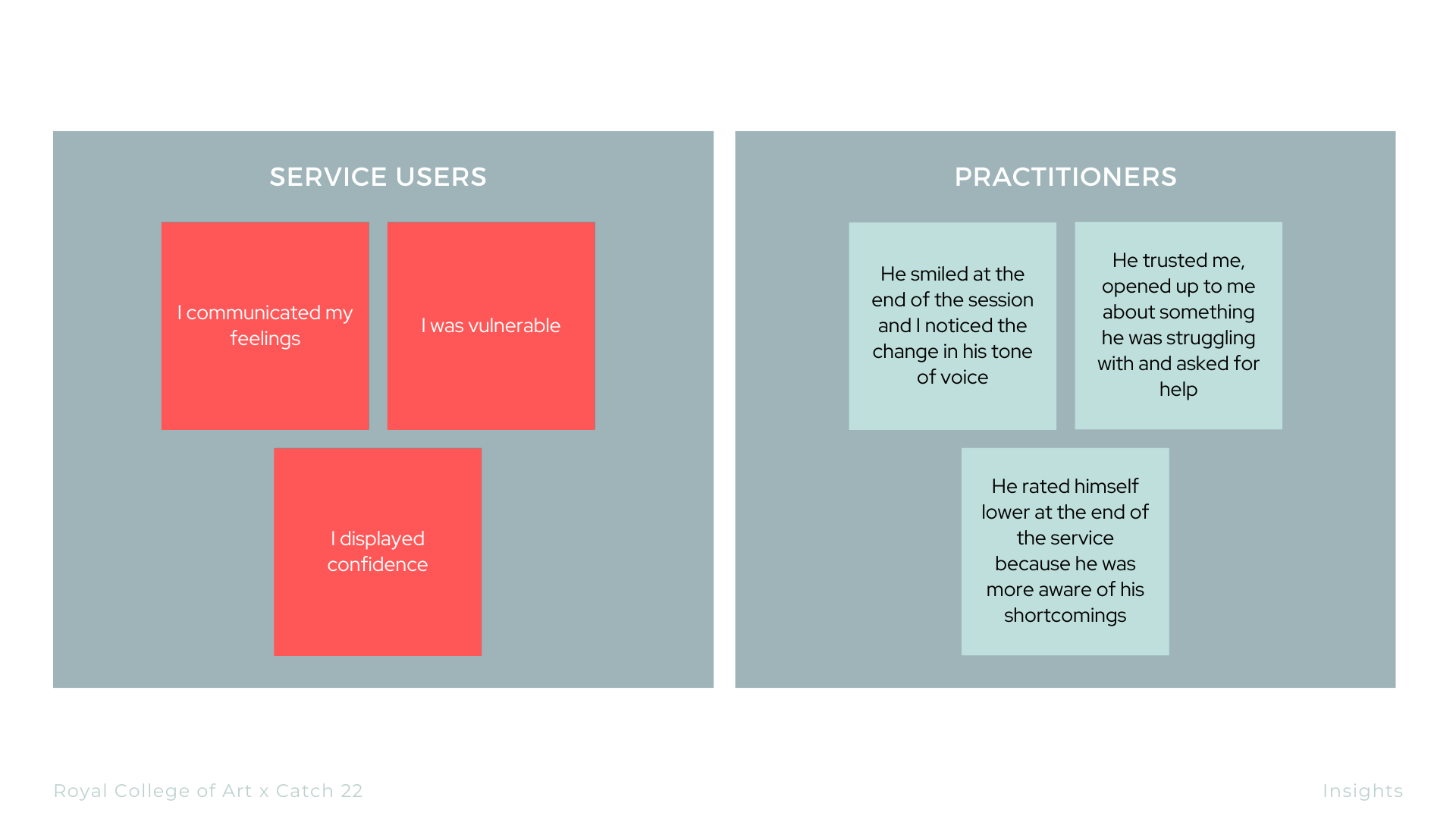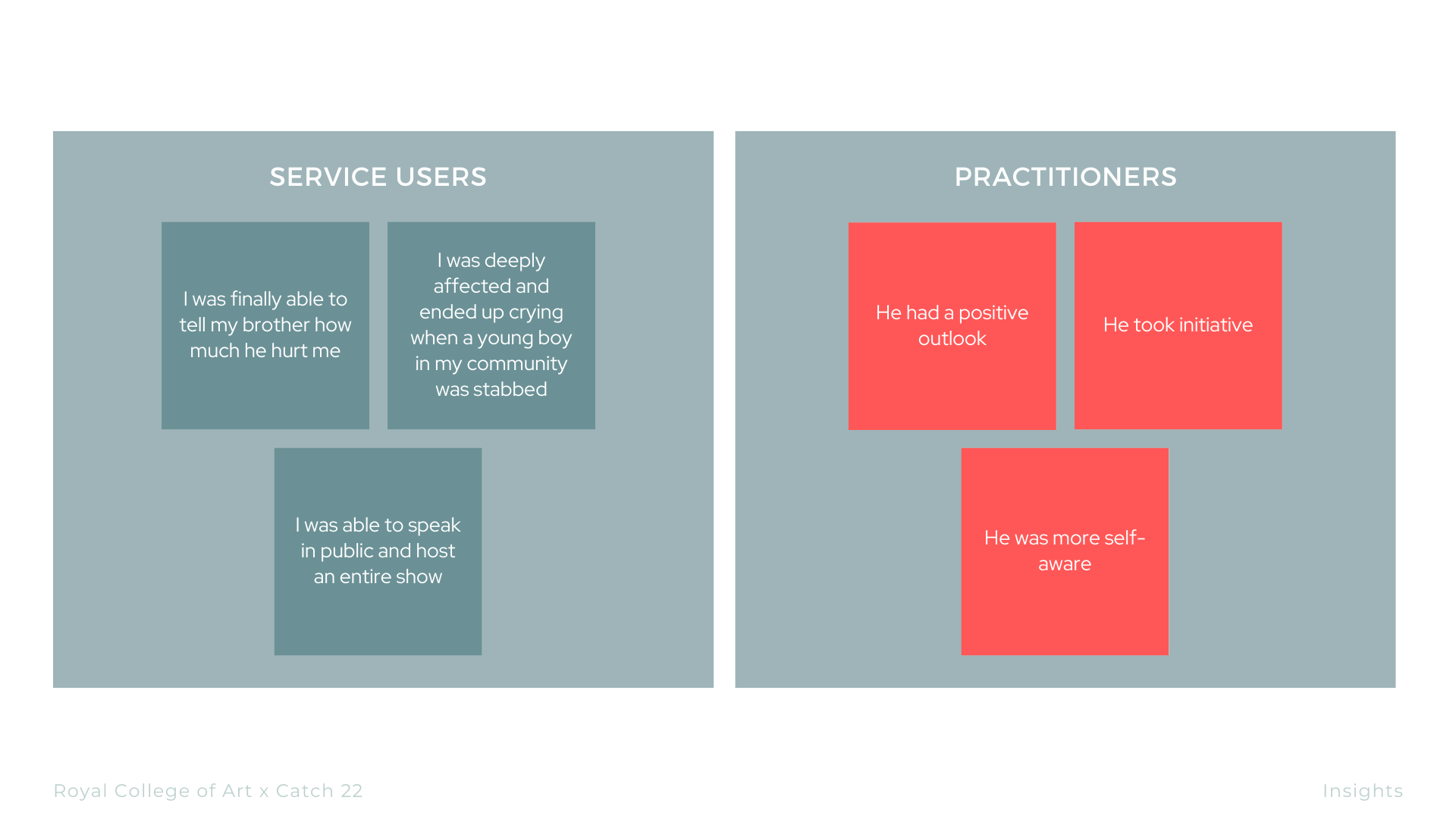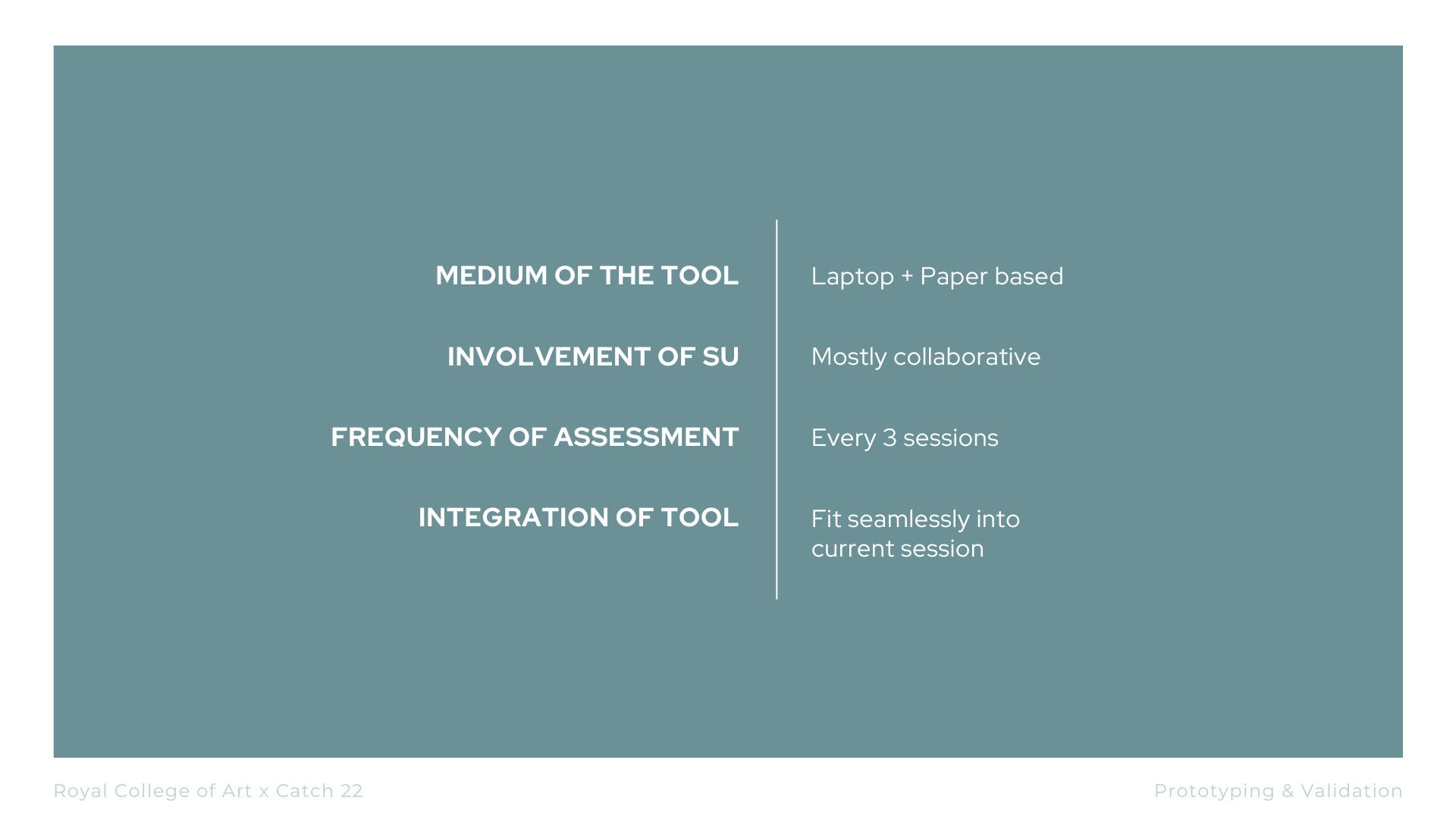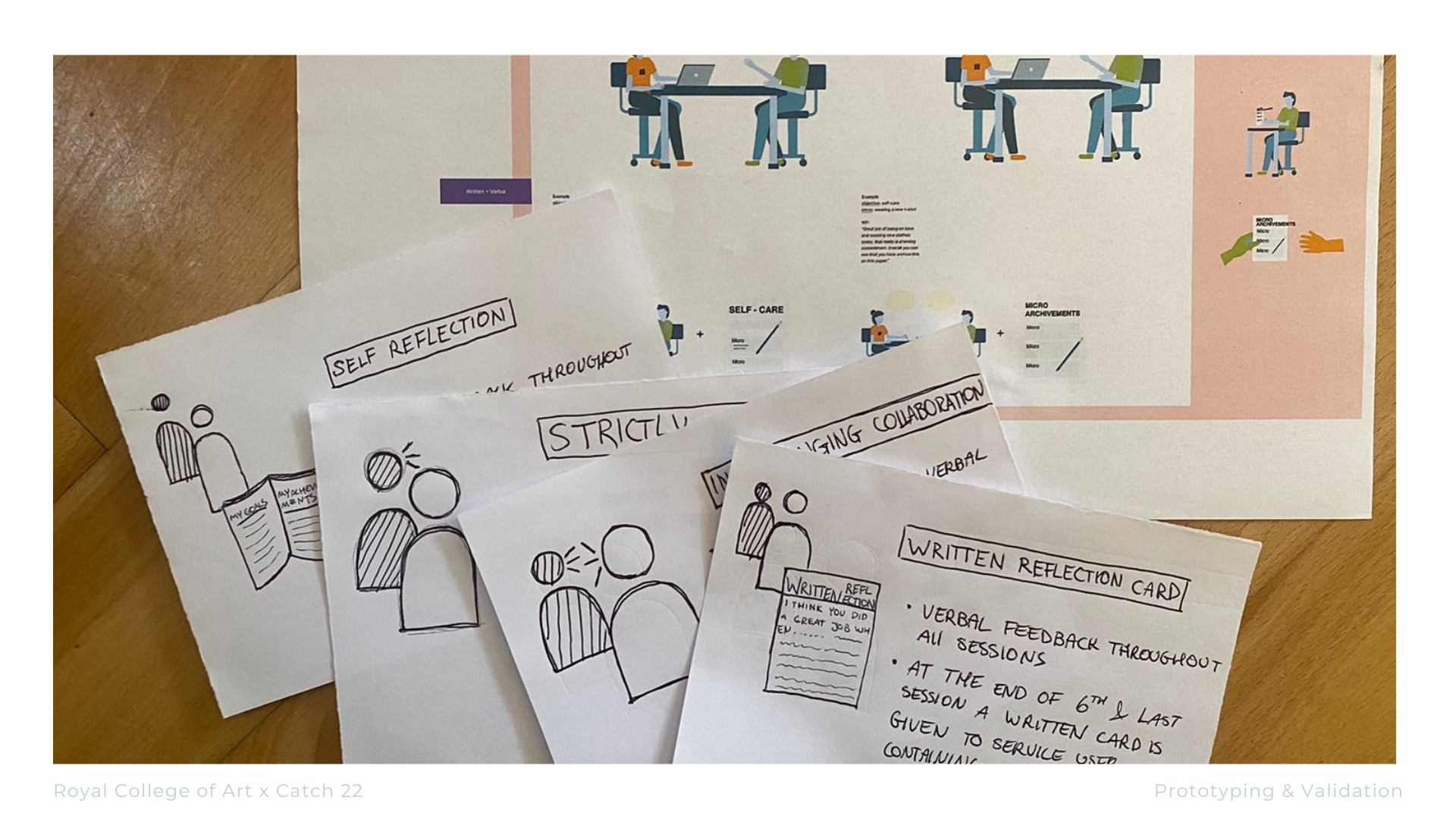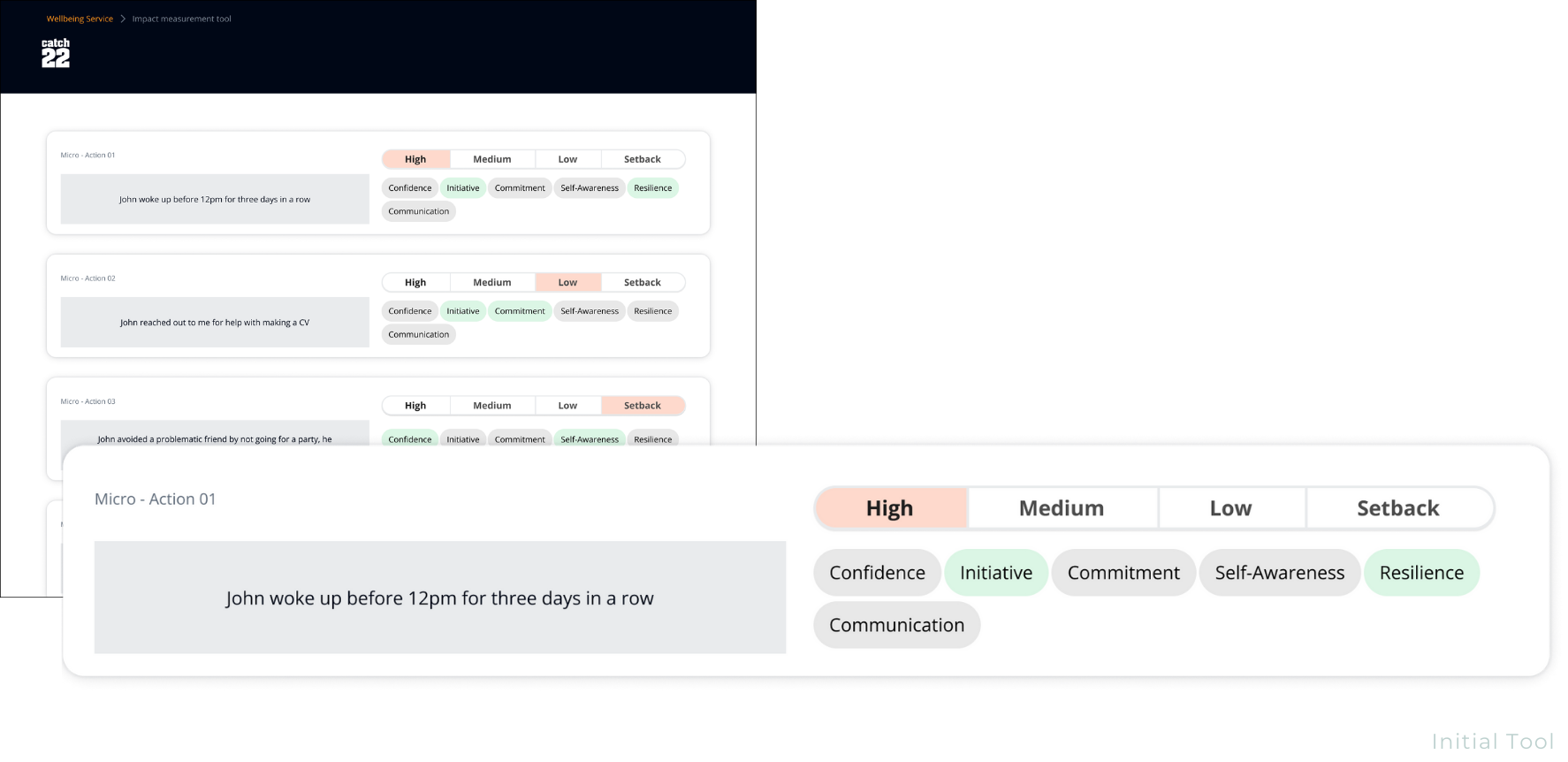We conducted a co-creation workshops with practitioners to validate this hypothesis, and
Practioners shared a long list of small wins that they had noticed in their past service
users.
eg "He showed up for the session"
The theory was validated and we created a way to document the signs.
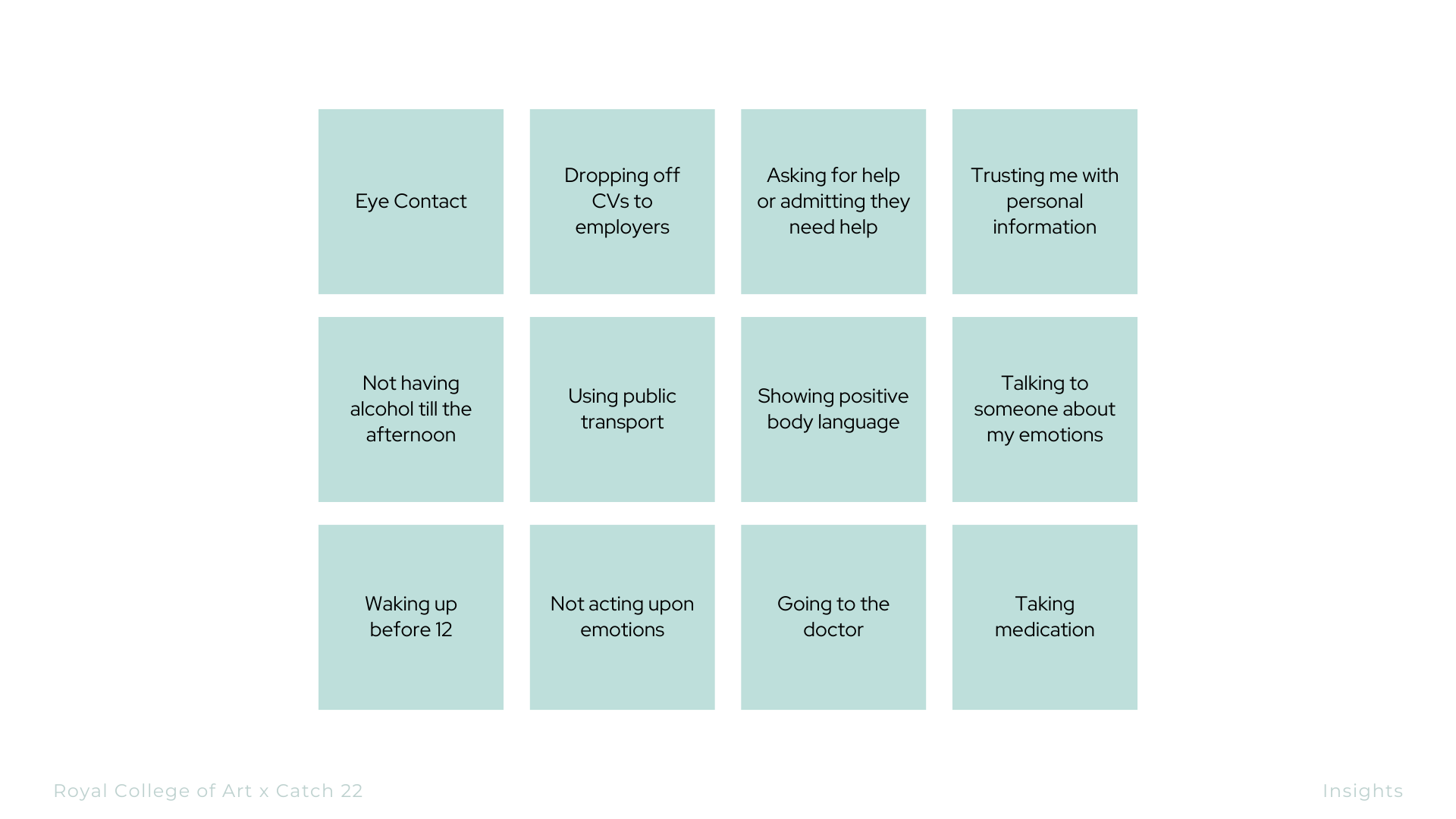
Tool Design
To effectively measure incremental progress for Service Users, our design approach began
with crucial inquiries to
define the most suitable medium, engagement level, and measurement frequency for the
tool.
In a co-creation workshop with practitioners, we established that the tool would
primarily operate on a laptop for
quick and accurate data collection, with a paper-based alternative available for
environments like prisons or probation
offices where connectivity may be limited. To build trust and foster agency among
Service Users, the documentation
process was designed to be collaborative, with practitioners holding the final
interpretive role to ensure accuracy
and relevance.
So, we created our preliminary tool which allows the practitioner to document and keep
track of all the micro-action that the service users were exhibiting. Consequently, they
can relate each micro-action to the severity of the action, and the area of growth that
it contributes to.
Meaningful data is created for communication towards
MoJ; as
well
as for tracking effectiveness of internal services.
Helps Practitioners organize their tacit knowledge
during
sessions, fostering genuine connection, trust, and transparency.
Empowers service users with self reflection and
critical
thinking
skills & reinforces trust in the system.
We looked to reshape our tool in a way that blends behavioural observations with the
overall feeling of the session.To achieve this, we decided to leverage the case notes
that practitioners submitted to the HMPPS website after every session. We believe this
data would help practitioners score different growth categories in a single session.
This iteration would thus fit seamlessly into the practitioner's existing workflow.
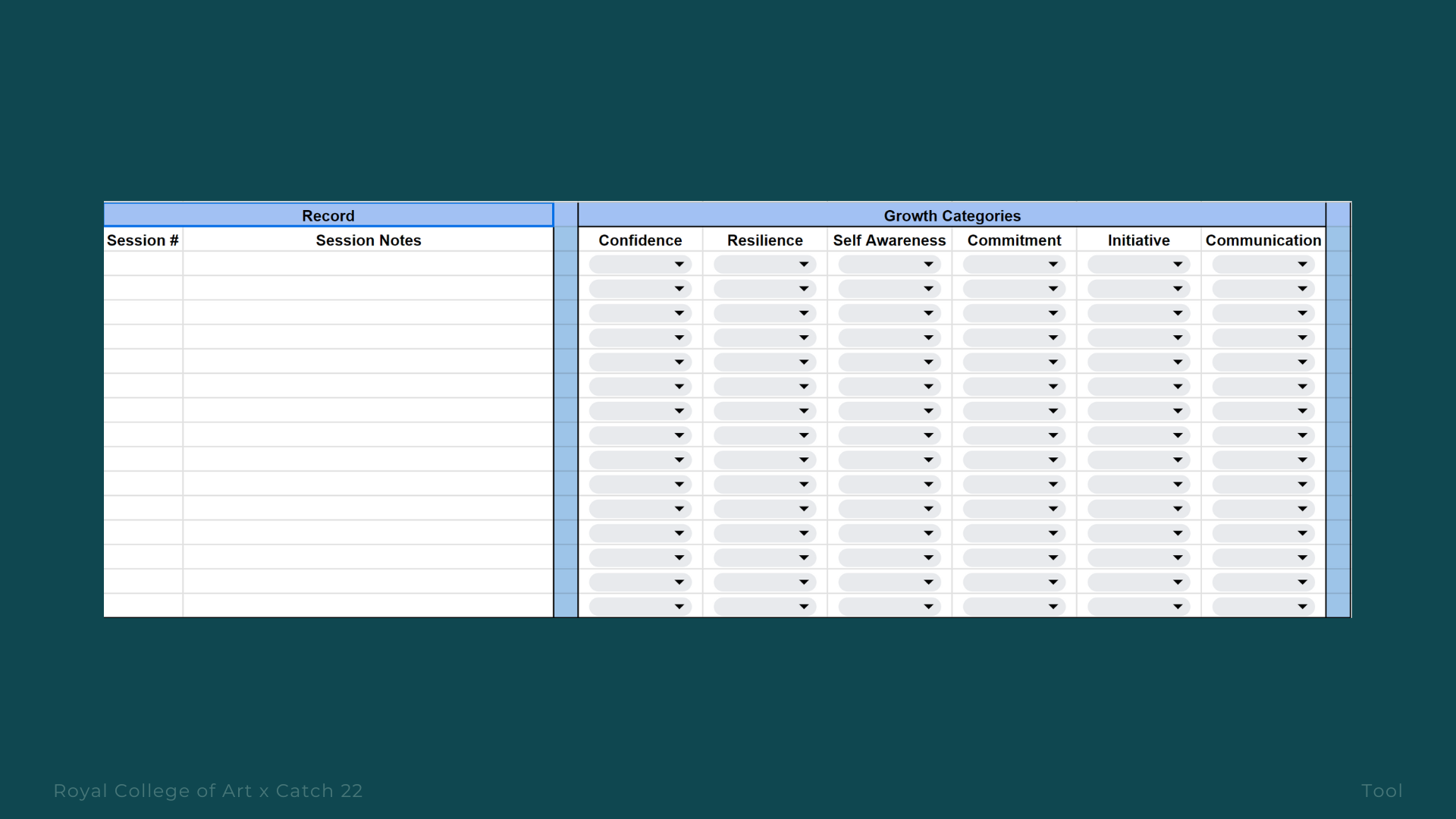
Our Theory of Change envisions a compassionate and informed Justice System where
progress is
measured in a way that respects the unique journeys of People on Probation. Through
Catch22's
refined tool, we aim to capture small, meaningful "Micro-Achievements" that reflect
genuine
growth. This approach empowers practitioners, aligns with MoJ expectations, and
ultimately
validates progress with data that acknowledges each individual’s path. By embedding this
tool
seamlessly into sessions, we foster a system that values incremental progress as
indicators of
long-term change, strengthening trust and transparency across all stakeholders.
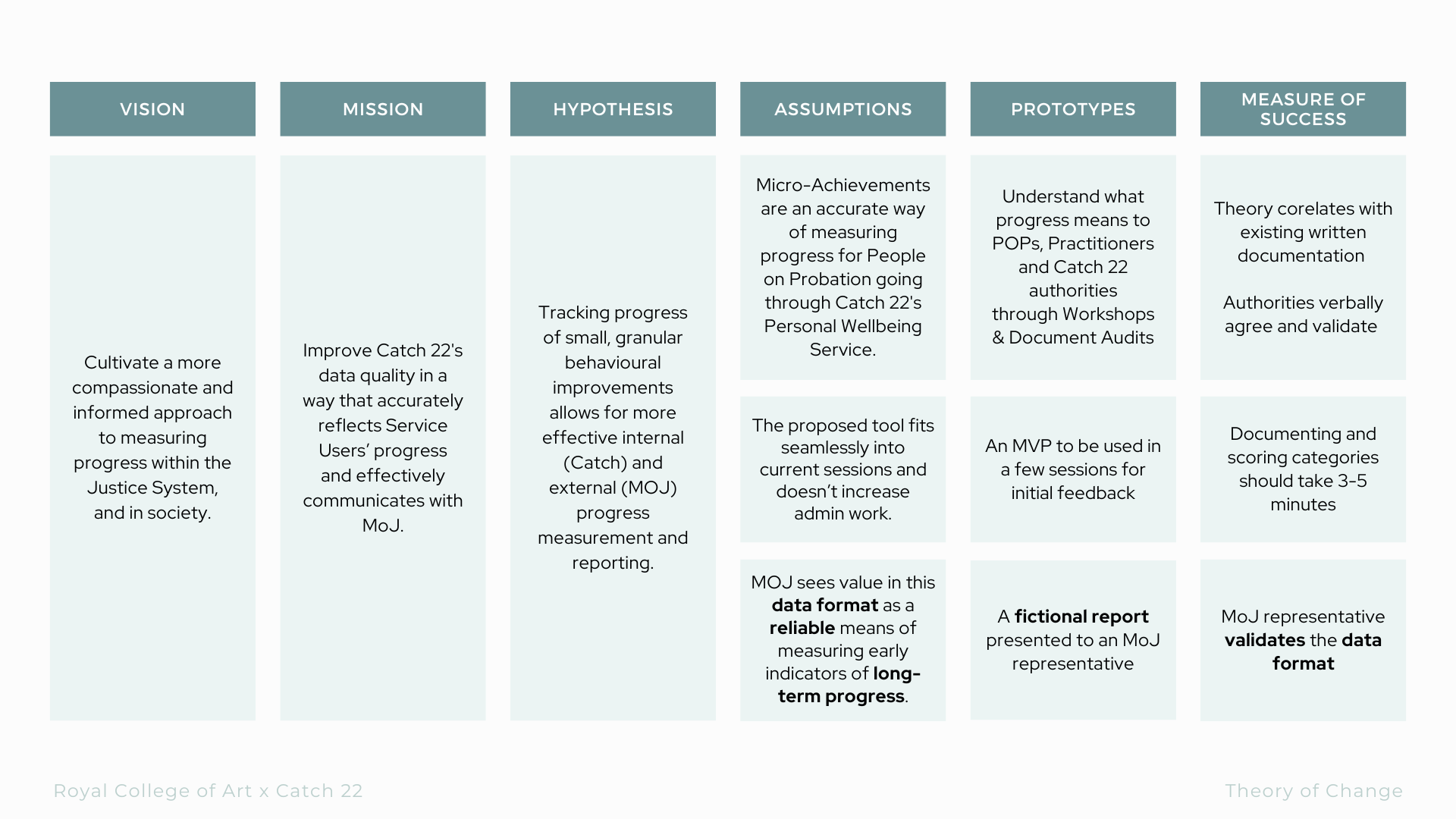
Summary: This framework provides a structured way to capture,
assess, and
report on incremental progress. By moving from broad outcomes to specific,
observable
micro-behaviors, Catch 22's tool can demonstrate meaningful, data-driven progress in
Service
Users' reintegration journeys, meeting MoJ's standards and building a more holistic
understanding of each individual's path to improvement.
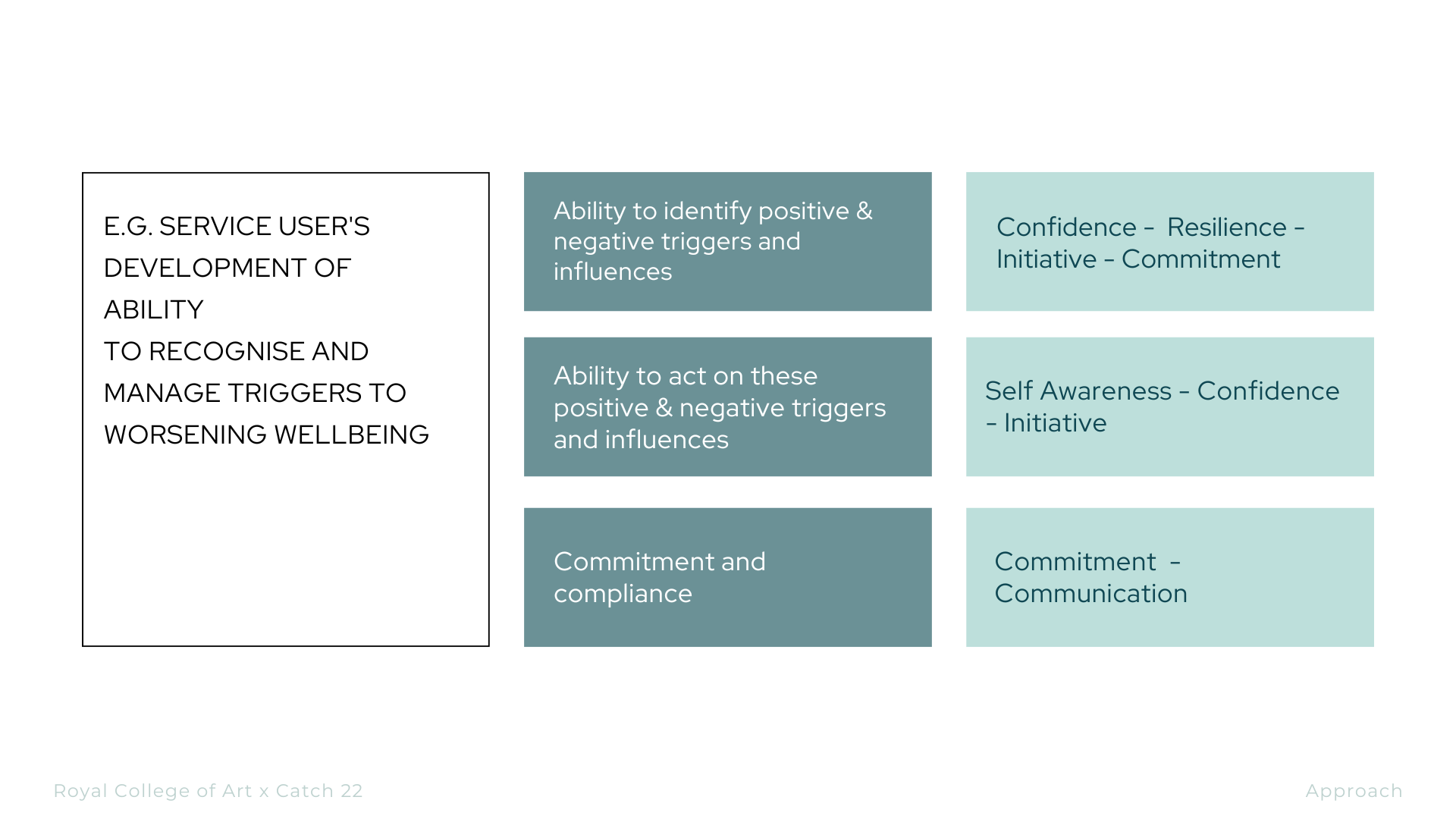
While we are keen on optimising the tool for Catch 22, one of our biggest stakeholders
are the MoJ, as they are the final recipients of the data generated from our tool.
Therefore, our final assumption to test is whether MOJ sees this data format as a
reliable means of measuring early indicators of long-term progress.
To test this assumption, we reached out to a representative from MoJ to get their
thoughts on a fictional report.
The report showcased the number of users who have made progress, and secondly highlight
the advancements achieved by SU through the service, categorised by the specific
pathways and outcomes they were referred for, as well as a deep dive into how the
progress is measured individually.
Through this conversation, we got critical feedback validating our approach.
